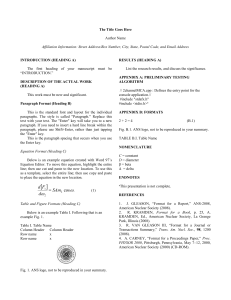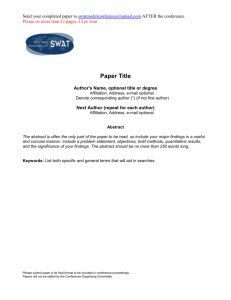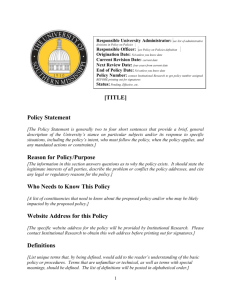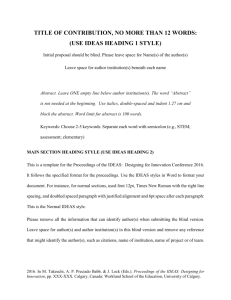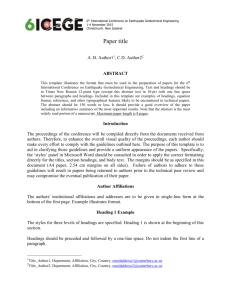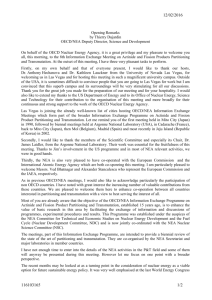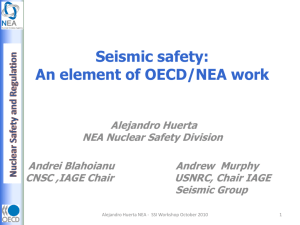SATIF-12 proceedings – Instructions for authors
advertisement
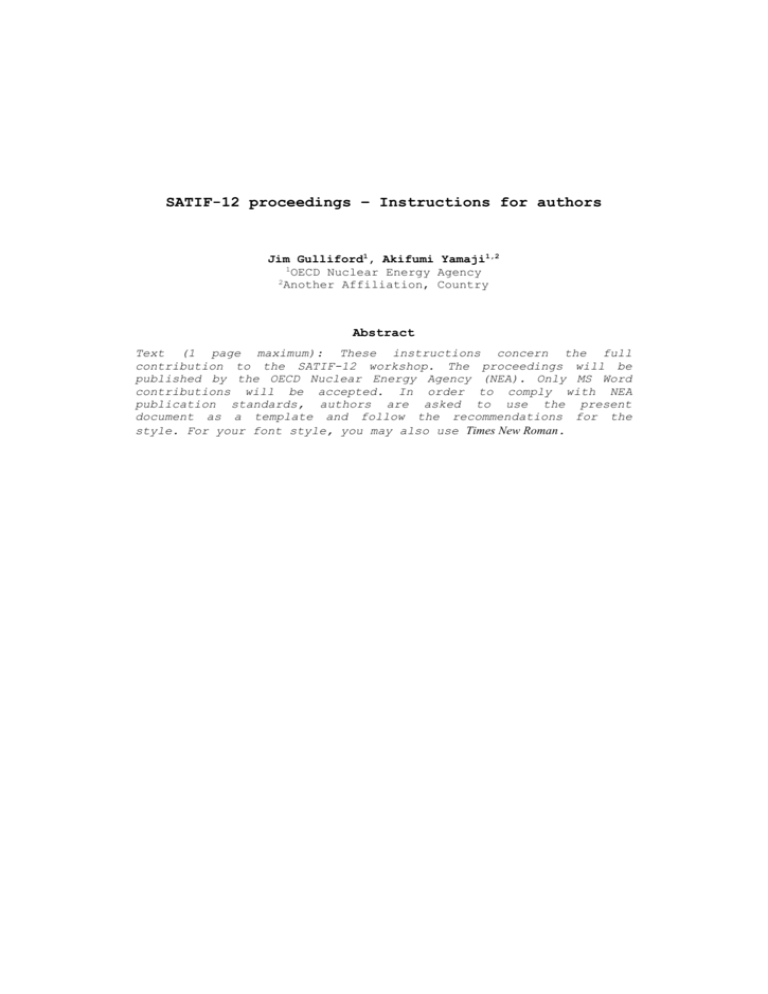
SATIF-12 proceedings – Instructions for authors Jim Gulliford1, Akifumi Yamaji1,2 1OECD Nuclear Energy Agency 2Another Affiliation, Country Abstract Text (1 page maximum): These instructions concern the full contribution to the SATIF-12 workshop. The proceedings will be published by the OECD Nuclear Energy Agency (NEA). Only MS Word contributions will be accepted. In order to comply with NEA publication standards, authors are asked to use the present document as a template and follow the recommendations for the style. For your font style, you may also use Times New Roman. Introduction This document provides general instructions for the preparation of the full contributions to the SATIF-12 workshop. The proceedings will be published by the OECD Nuclear Energy Agency (NEA). Only MS Word contributions will be accepted. There is no strict limitation on the number of pages (between 5 and 15 to give an indication). In order to comply with NEA publication standards, authors are asked to use the present document as a template and follow the recommendations for the style. d F1 SAm2 cos . d 2 (1) Submission of your full contribution See the SATIF-12 website for up-to-date instructions. Manuscript preparation Headings and numbering Do not use section numbers. The major headings should be formatted as “Heading 2”, the secondary headings as “Heading 3”, etc. The first paragraph following a heading is not indented. If a Heading 3 immediately follows Heading 2, suppress the 12 pts above the Heading 3 (as done in this section). Subsequent paragraph. paragraphs have a .75 cm indent. This is the subsequent Figures and tables The words “Figure(s)” and “Table(s)” are not abbreviated in the text or in the caption, which is placed above in both cases. Please, see Figure 1 and Table 1 for formatting instructions. Table 1: Table titles are bold and centred Scenarios 0% scenario 15% scenario 20-25% scenario Current (2010) Nuclear 0% 15 % 20-25 % 26 % Renewable energy 35 % 30 % 25 -30 % 10 % Fossil fuel 65 % 55 % 50 % 63 % Greenhouse gas emission1 ▲23 % ▲23 % ▲25 % ▲0.3 % Nuclear fuel cycle Direct disposal Reprocessing/direct disposal Reprocessing/direct disposal Reprocessing Table source Figure 1: Figure titles are bold and centred Equations Large equations should be centred with a right-adjusted Arabic numeral between parentheses. References to the equation in the text are abbreviated. Please see Equation (1). p ( x) dx 2 xe 2 x 4 dx (1) Acknowledgements Your acknowledgements should be entered here. References Please use numbered references. They should be consecutively numbered in order of their appearance in the text and listed at the end of the paper. Citations in the text are given using brackets [1] or [1] [2] or [1-3]. [1] T. Yamashita et al. (2002), “Rock-Like Oxide Fuels and Their Burning in LWRs”, J. Nuclear Sci. Technol., 39[8], pp. 865-871. [2] H. Akie, Y. Sugo, R. Okawa (2003), “Core burnup calculation and accidents analyses of a pressurized water reactor partially loaded with rock-like oxide fuel”, J. Nucl. Mat., 319, pp. 166-172. [3] T. Wakabayashi et al. (1997) “Feasibility studies on plutonium and minor actinide burning in fast reactors”, Nucl. Technol., 118, pp. 14-25.

